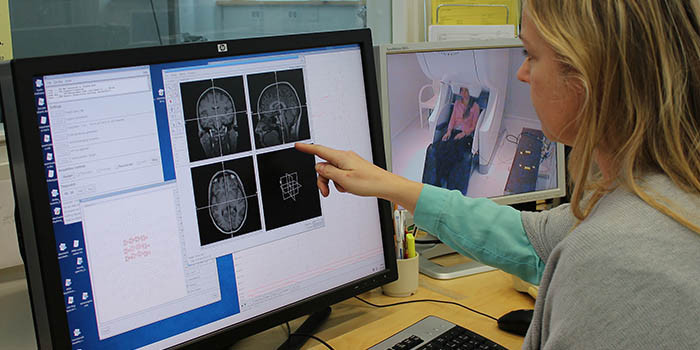Systems and Clinical Neuroscience
Our mission
We aim to understand how the human brain works by following electrophysiological and hemodynamic changes by means of noninvasive imaging: magnetoencephalography (MEG) to track brain dynamics at millisecond scale and functional magnetic resonance imaging (fMRI) to spot the active brain areas with millimeter precision. This systems-neuroscience approach suits well for merging information from many fields of science interested in human behavior: neuroscience, psychology, social psychology, neurology, and psychiatry. We translate basic-research results to clinics via CliniMEG.
Research interests
Brain basis of social interaction
Humans are tuned for and shaped by social interaction. Inherently, studies of the brain basis of social interaction are utmost challenging because the stimuli (gestures, postures, facial expressions, etc) are highly variable, and the brain responses depend in an unpredictable manner on the context, emotional state, and even on reactions of the interacting subject him/herself. Such studies are strongly motivated by the high number of disorders of social interaction, such as autism.
We are interested in socially relevant motor and sensory interaction systems that are activated during the subjects own actions or sensory percepts as well as when the subject observes another person performing a similar motor act or experiencing a similar sensory event. Such "mirroring systems" likely form the basis for intersubjective understanding.
We have developed new setups and analysis methods for naturalistic experimental conditions, with the aim of bringing the social life to the imaging laboratory by presenting e.g. movies to the subjects. One goal has been to move towards real "two-person neuroscience", both experimentally and conceptually, and we now have a working setof for simultaneous measurements of brain activity from two persons.
Sensory and motor systems
We study the human senrorimotor systems with increasingly complex stimulus settings, such as movie viewing, coversation and complex visual stimuli. Much of recent work has been related to corticokinematic coherence that we have demonstrated to mainly reflect proprioceptive input to the cortex.
Clinically oriented work
Our ongoing patient studies focus on the mechanisms of chronic pain, especially of complex regional pain syndrome (CRPS) and on the signature of recovery from stroke. This work is carried our by our CliniMEG team in close collaboration with other members of the Systems and Clinical Neuroscience section.
Methodological development
The most recent methodological development has been related to improved tools for corticokinematic coherence.



